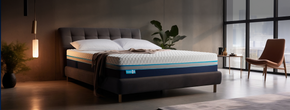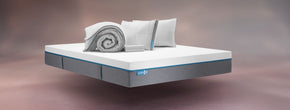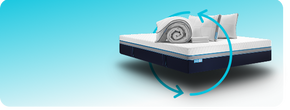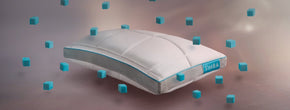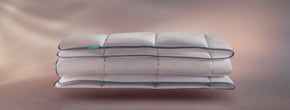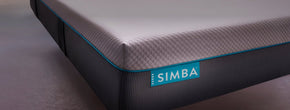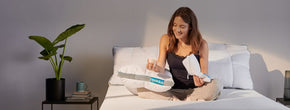The Art of Napping: How to Make the Most of Your Daytime Snooze

In certain countries, like Spain, napping is part of the culture. The daily siesta or ‘sixth hour’ allows people to escape the hottest part of the day, eat a proper meal, and then sleep off the post-lunch energy slump.
Elsewhere, whether we need to nap or not often depends on our age, lifestyle, and type of occupation. Babies can nap up to three times a day, toddlers once or twice a day. whereas for adults, the elderly, pregnant, and night shift workers may also nap regularly.
Is napping good for you?
The right kind of nap can offer various health benefits, recharge your batteries in a short amount of time, and boost your productivity.
A 2019 study concluded that napping is associated with a lower risk of cardiovascular disease for people who nap 1-2 times per week, however this benefit was not apparent in those who napped 6-7 times per week, suggesting that an occasional nap is better for you than a daily nap.
In the short napping can;
- Reduce fatigue
- Increase alertness
- Boost mood
- Improve concentration
- Relaxation
- Improve performance and reaction time
- Improve memory and learning
- Reduce blood pressure
How long should I nap?
Whether it’s caused by jet lag or lack of sleep the night before, there are ‘good’ naps that leave you feeling refreshed - and ‘bad’ naps that make you feel worse. The short shuteye that turns into an hour-long snooze can leave you feeling groggy and disoriented on waking.
If you’ve ever wondered how long should a nap be - the best naps tend to be short, so as not to interfere with our sleep schedule. If you find yourself wide awake at your usual bedtime, your nap was too long or too late in the afternoon.
For best results;
- Nap time should be limited to under 30 minutes or you risk entering a slow wave sleep cycle which is harder to wake from
- An extended 90 minute nap will allow you enter REM sleep, which can make up for lost sleep overnight
- Early afternoon is better - aim to nap no later than 3pm
- Limit disturbances or distractions - put your phone on silent, use ear plugs and an eye mask to block out light and noise
- Give yourself a few minutes to wake up rather than rushing back to an activity
When should I nap?
Given the choice, we should try to nap at the best time for our sleep schedule.
- Early risers (bed at 9pm, up at 6am) should nap around 1pm - 1.30pm
- Night owls (bed at 12pm/1am and up at 8am/9am) should nap between 2.30pm - 3pm
How long should a power nap be?
A ‘power nap’ is by definition, a short nap of 10 to 20 minutes. Not to be confused with the ‘disco’ nap, which is the one you take to recharge before a big night out and to help you stay up later.
When should I avoid napping?
If you tend to experience a ‘bad’ nap that leaves you feeling worse, or if you suffer from insomnia or other sleep disturbances, you might want to avoid napping during the day to give yourself the best chance of sleeping through the night.
Sleeping too much in the day can create a vicious cycle of being unable to get to sleep at night and feeling too tired during the day. People who wear contact lenses shouldn’t nap whilst wearing them, as this will cause dryness, discomfort, and starve your corneas of oxygen.
Is it normal for adults to nap?
It is perfectly normal for adults to nap. The siesta is part of Latin American and Mediterranean culture, where adults regularly take a break after lunch.
In Japan, where the population work some of the longest hours in the world, ‘inemuri’ means ‘sleeping while present’ - a concept that, for anyone who has glazed over in a meeting, lecture or lesson will find relatable. However, if you are finding it hard to stay awake during the day or napping more than usual, speak to your GP.
Napping and Pregnancy
During pregnancy, a daily nap can become essential. Pregnant women need more sleep and can supplement nighttime sleep (which can also become more difficult) with a nap during the day.
Napping and Ageing
Daytime napping is a normal part of ageing, and as we mature, we often sleep less at night, or wake earlier, and need to doze off in the middle of the day. Frequent or extended napping has been linked to Alzheimer’s, and after a diagnosis, this can accelerate rapidly.
How to optimise your nap time?
Unless we’re feeling sleepy it can be difficult to nap on demand. Make the most of a short break - with or without a catnap.
- Try a caffeine nap - unless you know you are very sensitive to caffeine, you can try necking a coffee just before your nap. As it can take 30 mins for caffeine to have an effect, this should make you more alert on waking
- Use an app to track your naps
- Take a walk - people who feel sluggish in the afternoon but can’t nap should head outdoors for fresh air and sunlight which can boost energy and be as mentally refreshing
- Meditate - 5 to 10 minutes of meditation can rejuvenate the mind
- A weighted blanket promotes feelings of relaxation and can make it easier to drop off more quickly
"Perfect for sleepless nights and needed power naps."-Paula J, Hybrid® Pro Mattress
"Never had so many naps in my life!"- Alan J, Hybrid® Luxe Mattress

